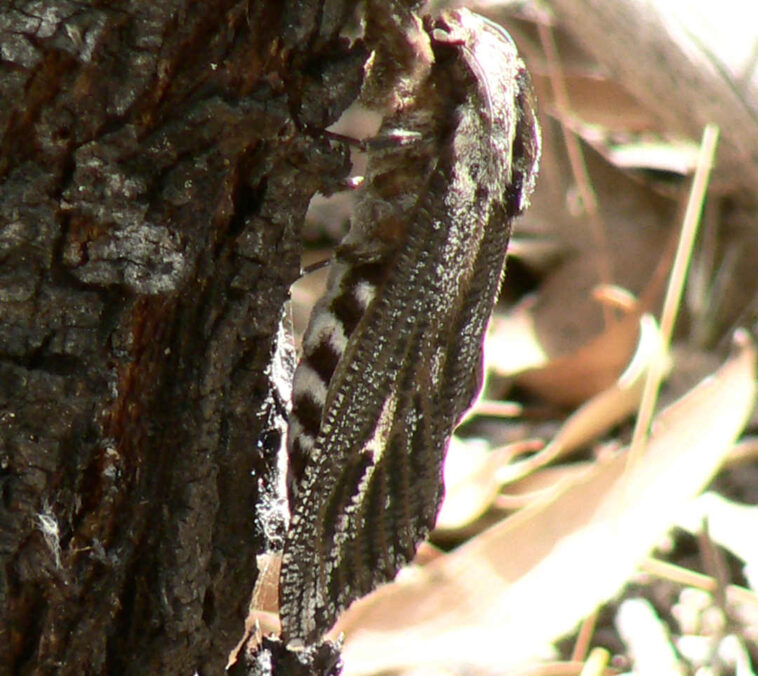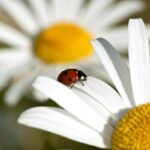Wattle Goat Moth (Endoxyla encalypti) helping citizen science win Scott Roberts
Estimated reading time: 5 minutes
A “remarkable photo” taken by an Echidna Walkabout guide way back in 2014 proves that when tourism and scientists work together citizen science wins. A recent research paper used this photo to help explain how the Wattle Goat Moth makes its entrance into the world
How photos on tour are winners for citizen science
Australia has lots of unique wildlife but have you heard of the Wattle Goat Moth? It’s our own special moth with a bizarre name. More about that odd name later…
But who cares about moths? Aren’t they just small flying bugs that bang into your window at night?
Enter the Wattle Goat Moth, a giant that’s 10cm long with a wingspan of 18cm. That’s a moth to stop you in your tracks, which is what Echidna Walkabout guide, Scott Roberts, did back in 2014.
He found this monster resting quietly at the base of a tree waiting for its wing membranes to fill with fluid so it could fly. This is what moths do when they have recently emerged from its pupal case. Fascinated, Scott took a few snaps before moving on.
As part of our citizen science efforts we uploaded the sighting to iNaturalist to help identify it and the name it gave us was Endoxyla encalypti, a giant moth that has larvae that bore into wattle trees (Acacia) creating extensive tunnels in the roots as they eat, grow and excrete wood fibre. (see the iNaturlist entry).
When it’s time for the larva to emerge it chews a tunnel to the outside air near the base of the tree. It then returns to its tunnel to build a cocoon, metamorphosing into a pupa, before finally exiting — through its previously drilled escape hatch — onto the trunk of the tree. Here they rest while their wings expand before flying off.
In the photo Scott took you can see the moth and, if you look carefully, you can see the pupal case protruding out of the ground below it.

How does this help scientific research?
Let’s fast forward to 2024 when insect scientist, Simon Fearn, from the Queen Victoria Museum (Tasmania), published a paper about the extraordinary activities of the Wattle Goat Moth. In it he refers to Echidna Walkabout’s observation in iNaturalist:
“During preparation of this paper, the author discovered a remarkable photo in the E. encalypti images gallery on the ALA website of a recently eclosed male taken in January 2014 at You Yangs Regional Park in Victoria” Simon Fearn
What’s remarkable is that this photo reveals three unusual events:
- A newly emerged moth with the pupal case and its hole in the same photo
- A new host species of Acacia for the Wattle Goat Moth
- An unusual way for the moth to emerge ie. instead of emerging from the trunk it’s bored directly up out of the root system
Citizen science wins but what’s with the name Wattle Goat Moth?
Tour operators and scientists can work together through citizen science. It’s easy. A quick phone snap and an upload to iNaturalist helped Simon produce a paper about a unique giant moth. It took 10 years but the record was there, passed on by an Echidna Walkabout wildlife guide to an insect scientist.
We now know a lot more about Endoxyla encalypti, but why is it called the Wattle Goat Moth? For some odd reason the larvae supposedly smell like a goat and they live in wattle trees. I have no idea how the name came about but if you’re ever near a Wattle Goat Moth let me know if it smells like a goat!
Moths are important
Moths are generally drab in colour and may appear insignificant and unimportant. But don’t be fooled, moths are incredibly important both as pollinators and as food for other animals. You can find out more about moths in this wonderful story: For the Love of Moths
For example the famous witchety grub (sometimes called Bardi) is consumed by First Nations people. This delicacy is often extracted by digging up the roots of acacia trees and splitting them open to get at the grub.
Wood boring grubs (larvae of moths) are also eaten by Black Cockatoos. To get the grubs they listen intently for the sound of the grub munching away inside a trunk or branch then rip it open with their powerful beaks to extract the larvae. Sometimes these feeding activities will fell small acacias!
NOTES
Help unleash the power of Conservation Travel
Step into the future of travel. Join one of our Conservation Travel tours. An increasing number of these tours include an important Citizen Science project.
Echidna Walkabout is a Founding Member of Australian Wildlife Journeys.
We also create, guide and operate tours for Australian Geographic Travel






GIPHY App Key not set. Please check settings